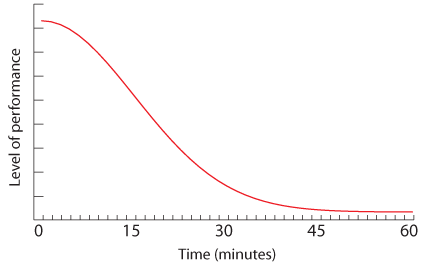Engaging your audience
Consider some of these approaches in engaging your audience when teaching a large class:
Arrive at the lecture early so that you look prepared and are not flustered. Practice your opening in advance. This can be outside the theatre if it is in use when you arrive.
Gain control of the lecture immediately. Develop and use signals that your students will understand. For example, one lecturer uses a single consistent behaviour as a visual cue that they are about to start, by standing in front of the lectern and making eye contact until the students settle. The lecturer will not move to that position unless they want their attention. It may take several lectures for this to become a recognised cue. Another lecturer sits at the back or to one side then moves forward when they are ready to start.
Keeping the attention of a large classe requires extra care when preparing. When planning your lecture, think about ways of changing the pace and method of delivery. Use a variety of techniques. This could be a chance for students to do an activity themselves, or to talk among themselves on a topic you have given them, for a set time.
Think about signposting your lecture in a similar way to delivering the six o'clock news. Tell your audience what you are going to cover (the headlines). Cover it (the actual information). And at the end, recap. This could also be done by outlining each week's topic and then sticking to the outline when delivering the lecture. Make it clear when you change topics.
The basics of planning a large lecture still remain true, although any interactions might need more care. In a small group you can generate questions off-the-cuff and place people into groups more easily; however, for a large lecture you will need to be more structured and organised. Think ahead as to what students may ask you and make sure you have got that information to hand. If you don't know the answer, say you'll post it on the discussion board later.
In your course planning, know what the objectives are and the techniques you might actually use to achieve them. Don't try to teach too much. Teach the pertinent points and make additional materials available separately for them to download. One lecturer offers information as a carrot for further exploration, i.e. here is some information, now go and look for some more information somewhere else.
Change activities every 10-15 minutes. Students' attention span is approximately 15 mins*, so refresh them by changing activity, e.g. from discussing a PowerPoint slide to having a quick quiz, or showing them an image of something humourous (but relevant to the topic) and then make the connection for them.
* The research behind this is derived from Johnstone and Percival's research in the 1970s. Reference: Johnstone, A.H. & Percival, F. (1976) Attention breaks in lectures, Education in Chemistry, 13, 49-50.


Try illustrating diagrams by colouring them on the document camera as you talk about them. This action will reinforce the students' learning and help them identify and remember the diagram. This is especially good for dry topics.
Use pauses in your delivery – it allows time to think.




